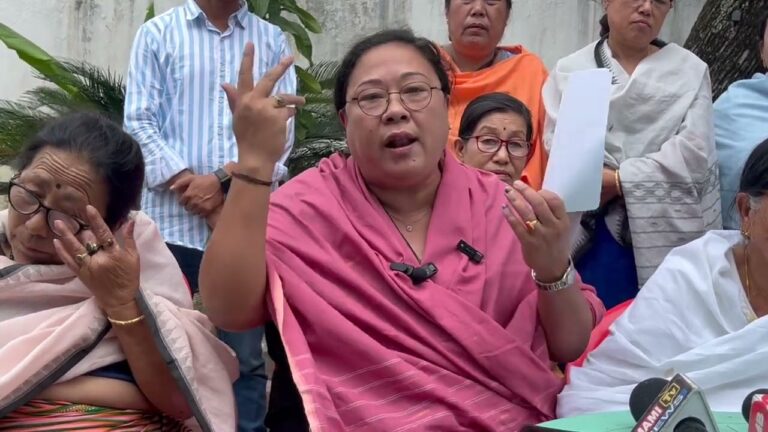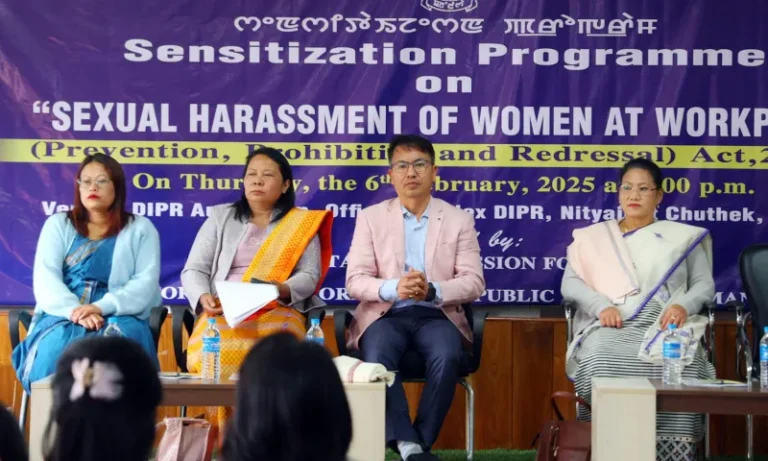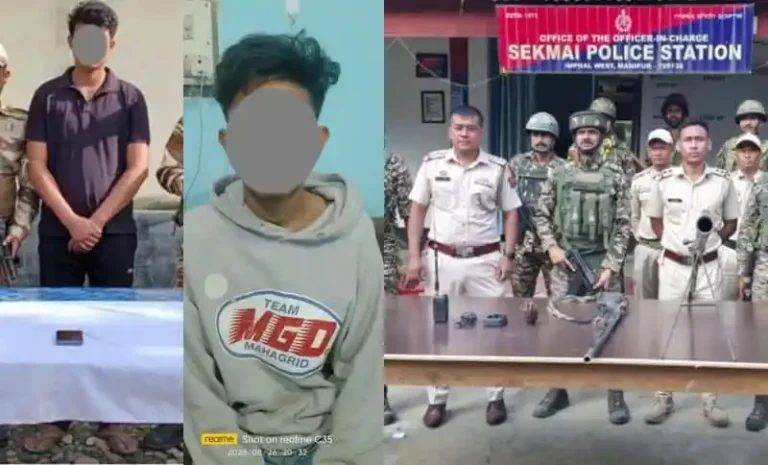Gaurav Gogoi Criticizes Modi and Shah Over Manipur Crisis: Unpacking the Political Fallout and Implications for Regional Stability
Short Summary
Gaurav Gogoi has recently leveled harsh criticism at Prime Minister Narendra Modi and Home Minister Amit Shah over their handling of the Manipur crisis. In a series of pointed remarks, Gogoi questioned the central leadership’s decisions and accused them of neglecting regional issues, sparking intense political debate and drawing public attention to the deep-seated challenges in Manipur. His statements have not only fueled political discourse but have also highlighted the growing disconnect between regional sentiments and national policy-making.
Introduction
Have you ever felt like the voices of the people are getting lost in the corridors of power? Recently, Gaurav Gogoi made headlines by openly criticizing Prime Minister Narendra Modi and Home Minister Amit Shah for their handling of the ongoing crisis in Manipur. This isn’t just political rhetoric—it’s a clear signal from one of the key voices in the region that the central leadership may be out of touch with the local realities. In this article, we’ll take a deep dive into Gogoi’s criticism, explore the backdrop of the Manipur crisis, and analyze what this means for both regional and national politics.
Understanding the Manipur Crisis: A Contextual Overview
Before we unpack Gogoi’s comments, it’s essential to understand the situation in Manipur. Manipur, a state known for its rich cultural heritage and vibrant communities, has been facing a multifaceted crisis. Whether it’s due to long-standing ethnic tensions, economic challenges, or security issues, the region has seen its fair share of unrest. Think of Manipur as a garden that, despite its beauty, has been plagued by persistent weeds. These “weeds” represent the myriad challenges that have been ignored or inadequately addressed by higher authorities.
At the heart of the crisis are issues such as political instability, insurgency, and socio-economic disparities. The lack of timely and effective intervention has not only exacerbated these problems but also created a sense of alienation among the local populace. The Manipur crisis is a complex blend of historical grievances, unmet developmental needs, and security concerns—a situation that demands a nuanced approach rather than a one-size-fits-all solution.
Gaurav Gogoi: Who Is He and What Are His Credentials?
Gaurav Gogoi is no stranger to the intricacies of Manipur’s political landscape. As a prominent political figure and a seasoned leader from the region, his voice carries weight among the people who have long struggled to see their issues addressed. With deep roots in local politics and a track record of advocating for regional interests, Gogoi’s critique comes from a place of genuine concern.
Gogoi has built his reputation on being a champion of local rights and a vocal critic of policies that seem to sideline regional priorities. When he speaks, it’s often with the authority of someone who truly understands the ground realities. His remarks regarding the Manipur crisis are thus not merely political posturing—they reflect a broader sentiment of frustration among many who feel that the central government has overlooked the unique challenges faced by this northeastern state.
The Nature of the Criticism: What Did Gogoi Say?
So, what exactly did Gogoi say? In a series of pointed and passionate remarks, he accused Modi and Shah of failing to address the escalating crisis in Manipur. His criticism was not limited to mere policy failures; he went as far as to question the leadership’s commitment to resolving the deep-rooted issues plaguing the state.
Gogoi argued that the current administration’s approach has been dismissive of local voices and has largely been characterized by top-down decision-making. Imagine trying to fix a leaking roof by merely placing a bucket underneath—it might provide temporary relief, but it doesn’t solve the underlying problem. This, according to Gogoi, is precisely what the central leadership is doing: offering band-aid solutions rather than addressing the structural issues head-on.
His rhetoric was laced with metaphors that resonated with the common man. He likened the government’s approach to “throwing pebbles at a landslide,” a vivid image that captures the futility of minimal interventions in the face of overwhelming challenges. His critique was a call to action for a more thoughtful, comprehensive, and empathetic approach to governance—one that genuinely considers the unique socio-political landscape of Manipur.
Political Dynamics: Modi and Shah’s Role in the Manipur Crisis
To fully appreciate the gravity of Gogoi’s criticism, it’s important to understand the roles played by Prime Minister Modi and Home Minister Shah in the context of the Manipur crisis. Both leaders have been at the helm of the central government’s response to various challenges across the country, including those in the northeastern states.
Modi’s leadership style is often described as assertive and decisive, with a focus on strong central governance. However, critics argue that this approach sometimes overlooks the nuances of regional issues. In the case of Manipur, many feel that the central government’s interventions have been heavy-handed and have failed to account for local sensitivities. Shah, who is closely associated with the country’s security apparatus, has been a key figure in implementing policies aimed at curbing insurgency and maintaining law and order. Yet, the perception among some in Manipur is that these policies have not translated into real improvements on the ground.
Gogoi’s remarks tap into this broader critique: the idea that while national leaders may excel in projecting strength and decisiveness on a macro level, they might be falling short when it comes to the micro-level, region-specific challenges. When a leader like Gogoi, who is deeply embedded in the local context, questions the central leadership’s approach, it sends ripples through the political landscape, stirring debates about decentralization, local autonomy, and the need for tailored governance models.
Implications of the Criticism: Impact on National and Regional Politics
Gogoi’s critique is more than just a local grievance; it has significant implications for both national and regional politics. On a national scale, such criticisms challenge the narrative of unified, centralized governance that the current administration has championed. They force political observers and policymakers to ask: Are we truly addressing the needs of every region, or are some areas being left behind?
From a regional perspective, the criticism resonates deeply with the people of Manipur. It validates the frustrations of many locals who have long felt ignored by a distant central government. This sentiment can lead to increased political mobilization in the region, with local leaders rallying around the cause of more inclusive and responsive governance. In political terms, it could herald a shift where regional issues gain more prominence in national debates, potentially leading to policy reforms and even changes in political alliances.
Moreover, such high-profile criticisms can have a domino effect on the political discourse in other states facing similar challenges. When a seasoned leader like Gogoi publicly questions the central leadership’s strategies, it opens the door for similar voices from across the country to step forward. This could result in a more decentralized approach to governance, where local solutions are prioritized over blanket policies.
Public Sentiment and Social Reactions
Let’s face it—politics isn’t just about decisions made in ivory towers; it’s about how those decisions affect everyday lives. The public reaction to Gogoi’s criticism has been mixed, but it’s clear that his words have struck a chord. Many people in Manipur and other northeastern states have welcomed his candid remarks, feeling that they reflect their own experiences of neglect and mismanagement.
Social media platforms are buzzing with discussions, as citizens weigh in on the effectiveness of the government’s handling of the crisis. Some praise Gogoi for his bold stance, arguing that his criticism is a necessary wake-up call for the leadership to rethink its strategies. Others, however, caution against politicizing the crisis too much, suggesting that the focus should instead be on constructive solutions rather than finger-pointing.
This diverse range of opinions is indicative of a larger trend in contemporary politics—one where the public is increasingly unwilling to accept one-size-fits-all solutions to complex problems. People want policies that are tailored to their specific needs and challenges, and they expect their leaders to be responsive and accountable. Gogoi’s critique, therefore, is not just a political statement; it’s a reflection of the growing demand for more participatory and localized governance.
Comparative Analysis: Past Political Criticisms and Their Outcomes
Gogoi’s comments remind us of previous instances when regional leaders have taken on the central government. History is replete with examples where vocal criticisms have either led to meaningful change or have been dismissed as mere political maneuvering. Take, for instance, the various protests and public outcries in the northeastern states over the years—many of which have eventually forced the central government to revisit and revise its policies.
One can draw parallels with earlier political figures who challenged the status quo. Their criticisms, much like Gogoi’s, were rooted in genuine concerns about the disconnect between policy and practice. In many cases, these criticisms spurred debates that eventually led to policy adjustments, even if incremental. The key takeaway here is that while criticisms from regional leaders might initially be met with resistance, they often pave the way for a broader dialogue about governance and accountability.
Consider the metaphor of a pressure cooker—when the pressure builds up for too long, it eventually finds a way to release it, sometimes through a sudden burst or a gradual adjustment. Gogoi’s remarks can be seen as a necessary release valve in a political system that has long been under strain. They force the central leadership to confront uncomfortable truths about the effectiveness of their policies and the growing disconnect with regional realities.
The Road Ahead: Potential Policy Changes and Political Realignments
What happens next? Will Gogoi’s criticism lead to concrete policy changes, or will it be brushed off as political grandstanding? Only time will tell, but there are a few likely scenarios that could unfold.
One possibility is that the central government may take a more proactive approach in addressing the grievances of Manipur. This could involve engaging with local leaders, conducting comprehensive reviews of existing policies, and implementing targeted initiatives aimed at resolving the crisis. Such a response would not only help mend the rift between the region and the central government but also set a precedent for more responsive governance in other troubled areas.
Another potential outcome is a political realignment in the northeastern states. With public sentiment increasingly leaning towards more localized control and accountability, regional parties and leaders might gain more influence. This could shift the balance of power in national politics, forcing the central leadership to reconsider its approach to governance in diverse regions like Manipur.
There’s also the possibility of intensified political debate and even polarization. When high-profile figures like Gogoi openly challenge national leaders, it often sparks a chain reaction of counter-criticisms and defensive posturing. Such a scenario could lead to a period of political instability, where constructive dialogue is overshadowed by partisan bickering. However, if managed well, this debate could eventually lead to a more robust and inclusive policy framework that better addresses regional needs.
Analyzing the Role of Media and Public Discourse
In today’s digital age, media plays a pivotal role in shaping public opinion. Gogoi’s remarks have been widely covered and dissected by various news outlets, social media platforms, and opinion pieces. This widespread media coverage not only amplifies his voice but also forces the central leadership to engage with these criticisms publicly.
The media’s role in such scenarios cannot be overstated. Just like a magnifying glass that intensifies the sunlight, media coverage can intensify public scrutiny and put pressure on policymakers to act. While this can sometimes lead to sensationalism, it often serves as a catalyst for necessary debates about governance, accountability, and transparency. In the case of the Manipur crisis, the media’s portrayal of Gogoi’s criticism has sparked a broader conversation about the role of the central government in addressing regional challenges—a conversation that is likely to continue for some time.
The Broader Implications for Democracy and Governance
At its core, Gogoi’s criticism touches upon fundamental questions about democracy and governance. In a democratic setup, every voice matters, and regional issues must be addressed with the same rigor as national ones. When leaders like Modi and Shah are criticized for their approach, it forces us to reflect on the nature of centralization and decentralization in modern governance.
One might ask, is it fair for a diverse country like India to have a one-size-fits-all policy when different regions have vastly different challenges? The answer is seldom straightforward. However, the criticism from Gogoi underscores the need for a more nuanced, flexible, and empathetic approach to governance—one that takes into account the unique needs of each region. This is not just a political issue; it’s a question of how we, as a nation, want to define our democratic ideals in practice.
Learning from the Past: Lessons for Future Governance
History teaches us that the success of any governance model lies in its ability to adapt and evolve. Past criticisms, when addressed constructively, have led to significant reforms and policy changes. For instance, earlier challenges in various parts of India eventually paved the way for greater autonomy and more tailored development initiatives. Gogoi’s critique could well be the beginning of a similar transformation in the way the central government engages with its northeastern states.
Imagine a river that carves its own path over time—gradually, it shapes the landscape to suit its flow. Similarly, the current political debate could lead to a reimagining of governance structures that are more responsive to regional realities. Such a transformation would not only benefit Manipur but could also serve as a model for other regions grappling with similar challenges.
Conclusion
Gaurav Gogoi’s recent criticism of Prime Minister Modi and Home Minister Shah over the Manipur crisis is more than just a political statement—it’s a clarion call for a more responsive, inclusive, and regionally attuned approach to governance. His remarks encapsulate the frustrations of many in Manipur who feel that the central leadership has failed to understand or address the unique challenges faced by their state.
Through his pointed criticisms, Gogoi has highlighted the need for policies that are not only decisive at a national level but also sensitive to the local nuances of regions like Manipur. The ensuing debates, media coverage, and public discourse promise to shape the future of governance, potentially leading to reforms that bring regional aspirations to the forefront of national policy.
As we move forward, the hope is that such criticisms will not merely remain as expressions of discontent but will serve as catalysts for meaningful change. Whether it’s through enhanced dialogue between the central and regional governments, legislative reforms, or a shift in political alignments, the ultimate goal remains clear: to build a governance system that listens, adapts, and truly serves every corner of the nation.
In the end, the discourse sparked by Gogoi’s remarks is a testament to the vibrant, dynamic, and sometimes tumultuous nature of Indian democracy. It reminds us that every voice matters, every concern is valid, and that the path to progress is paved with honest, sometimes hard-hitting conversations about how best to serve the people.
FAQs
- Q: What are the main points of Gaurav Gogoi’s criticism against Modi and Shah?
A: Gogoi criticized the central leadership for adopting a one-size-fits-all approach to the Manipur crisis, arguing that the government’s measures are superficial and fail to address the deep-rooted local issues. - Q: How does the Manipur crisis affect the local population?
A: The crisis has led to socio-economic instability, security concerns, and a growing sense of alienation among the local people, who feel that their unique challenges are being ignored by national policies. - Q: Why is regional criticism important in a diverse country like India?
A: Regional criticism ensures that the distinct challenges and needs of different areas are recognized and addressed, leading to more inclusive and effective governance across the country. - Q: What impact could Gogoi’s remarks have on national politics?
A: His remarks might prompt a re-evaluation of central policies towards regional issues, potentially leading to more decentralized decision-making and tailored solutions that better serve local communities. - Q: What steps could the central government take to better address the Manipur crisis?
A: The government could engage more closely with local leaders, implement region-specific policies, enhance intelligence and on-ground support, and promote a participatory approach that includes community input in decision-making.




